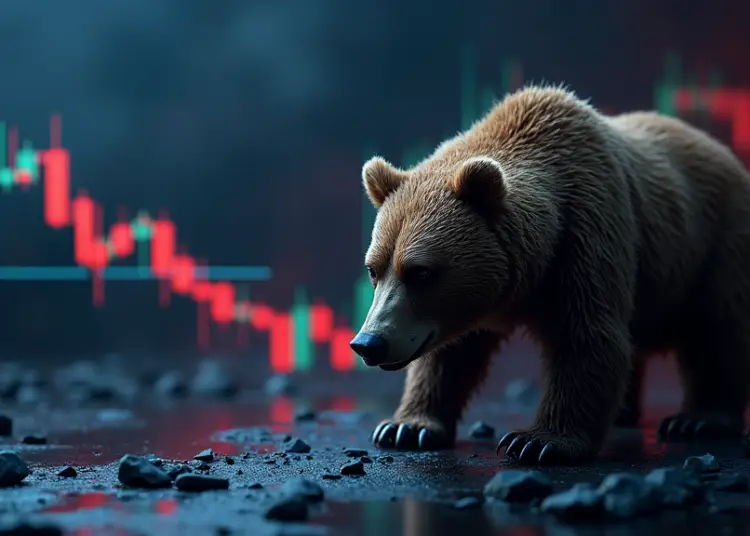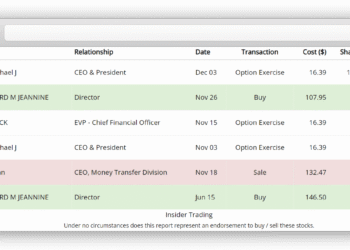In the world of options trading, the **bear put spread** stands out as a refined strategy for investors looking to capitalize on declining market trends. This trading strategy is particularly effective when you anticipate a bearish movement in a stock’s price, allowing traders to profit while minimizing risk. By simultaneously buying and selling put options at different strike prices, this approach not only limits potential losses but also maximizes gains if executed correctly. A **bear put spread example** can illustrate its practicality, as traders can structure their plays to benefit optimally from bearish market conditions. For those ready to embrace strategies that generate profits from bearish markets, understanding the nuances of the bear put spread is essential.
The bear put spread is effectively a tactical approach in the realm of options investing, often referred to as a vertical spread because it involves transactions at different strike prices along the same expiration date. Investors looking to engage in this type of strategy can utilize an options strategy screener to identify suitable trades that align with their market outlook. This method is favored for its ability to help traders manage risk while seeking returns amid falling stock prices. By integrating both the purchase of a put option and the sale of another at a lower strike, this method allows traders to maximize their profit potential while effectively hedging against losses. Understanding this approach can enable investors to navigate the complexities of bearish markets with more confidence.
Understanding the Bear Put Spread Strategy
A bear put spread is a vital trading strategy that allows traders to leverage bearish market conditions for profit. It involves buying a put option and simultaneously selling another put option at a lower strike price. This method not only restricts potential losses but also caps potential profits. By utilizing this options strategy, traders aim to capitalize on anticipated declines in a stock’s price. This makes the bear put spread particularly appealing during volatile market phases when downside protection becomes paramount.
When engaging in options trading using a bear put spread, it is crucial to conduct thorough research and identify stocks that align with a bearish outlook. Utilizing tools such as an options strategy screener can significantly enhance the selection process. With market sentiment indicating potential downturns, traders can strategically position themselves to profit from these price movements, thus maximizing the effectiveness of their trading strategies.
Analyzing Bear Put Spread Example: AMD
Consider the bear put spread example of Advanced Micro Devices (AMD). The trade involves purchasing a $103 put option while simultaneously selling a $101 put option. For an investment of $140, limited to the premium paid, traders can navigate potential declines in AMD’s stock price effectively. The maximum gain achievable from this strategy stands at $60, contingent upon the decline of AMD’s stock price below $101.60 by expiration.
This example illustrates not only the mechanics behind the bear put spread but also the importance of timing and market analysis. Being mindful of AMD’s market performance, coupled with the current implied volatility metrics, can assist traders in determining the ideal time to enter this trade, ultimately enhancing their profit potential from bearish market conditions.
GOOGL Bear Put Spread: A Profitable Outlook
In the case of Alphabet Inc. (GOOGL), the bear put spread strategy can be seen as a profitable trading approach. By purchasing the $175 put while selling the $167.50 put, traders can implement this strategy effectively, paying $480 to enter the position. With a maximum possible gain of $270, GOOGL traders can benefit significantly if the stock remains below $167.50 until expiration.
The design of a bear put spread, as exemplified with GOOGL, showcases the importance of monitoring implied volatility. With a high IV percentile suggesting potential for further price decline, traders can strategically utilize this information. This example emphasizes the necessity for traders to continually assess market conditions to optimize the execution of their trading strategies.
PayPal’s Bear Put Spread Example: Managing Risks
The bear put spread example involving PayPal (PYPL) demonstrates another potential opportunity for traders. This trade involves buying the $72.50 put and selling the $70 put option, costing $163 as a maximum potential loss. With the possibility of earning up to $87 if PYPL falls below $70, traders can benefit from the stock’s downward pressure while minimizing risks.
Managing risks within this strategy is essential. Given that options carry inherent risks, adopting prudent risk management practices such as setting a stop loss can safeguard investments. This approach not only protects the trader’s capital but also aligns with the key tenet of the bear put spread – limiting downside risk while participating in bearish market moves.
Utilizing Options Strategy Screeners
Options strategy screeners play a pivotal role in enhancing the effectiveness of trading strategies like the bear put spread. These tools enable traders to filter for stocks based on various criteria including volatility, option prices, and overall market sentiment. By streamlining the options selection process, traders can identify bearish opportunities that fit their strategy.
Incorporating a strategy screener ensures that traders are not just guessing but are making informed decisions based on quantitative analysis and market indicators. This method of systematic evaluation can significantly elevate a trader’s chances of profitability, especially in bearish markets where timing and stock selection are crucial.
Profit from Bearish Markets: Key Techniques
To profit from bearish markets, traders often utilize strategies like the bear put spread that capitalize on declining prices. Understanding market dynamics and trends allows one to anticipate shifts effectively. By implementing this strategy, traders can position themselves confidently, knowing they have a manageable risk profile.
Further, diversifying the assets included in a bear put spread can also enhance profit potential. By selecting stocks with high volatility and a strong bearish outlook, traders increase their chances of maximizing gains while mitigating potential losses. This holistic approach to options trading in bearish markets empowers traders to construct a balanced yet opportunistic portfolio.
Risk Management in Bear Put Spreads
Risk management is a fundamental component of successful trading strategies, particularly in a bear put spread. By utilizing defined-risk trades, traders can clearly outline their maximum losses ahead of time, enabling a better focus on executing profitable trades without the fear of excessive risk exposure. Establishing limits such as a stop loss can also shield traders from unexpected market fluctuations.
Moreover, understanding how options decay over time is crucial for effective risk management. Since a bear put spread can face time decay, traders need to be efficient in timing their trades to avoid unnecessary losses. This careful consideration adds another layer of protection, reinforcing the strength of the bear put spread as a trading strategy during bearish market conditions.
Educating Yourself on Options Trading
Education is key when it comes to mastering options trading strategies like the bear put spread. Resources such as online courses, financial literature, and workshops can provide traders with a solid foundation in options mechanics, market analysis, and strategic execution. The more knowledge traders accumulate, the better equipped they become to navigate the complexities of the options market.
Additionally, staying updated with market trends and news can significantly influence trading outcomes. Regularly following reputable financial news and analysis platforms, such as Barchart, allows traders to keep their finger on the pulse and adapt their strategies accordingly. An educated trader is likely to make more informed decisions that can lead to improved trading success.
Conclusion: Mastering Bear Put Spreads for Profit
In conclusion, mastering the bear put spread strategy can be a powerful tool for traders looking to profit from bearish markets. Through careful analysis, strategic use of options, and effective risk management, traders can navigate potential market declines with confidence. Each example provided, from AMD to GOOGL and PYPL, highlights how traders can implement this strategy effectively while emphasizing the importance of thorough research and analysis.
Embracing resources like options strategy screeners and continuous education can further enhance a trader’s effectiveness in executing bear put spreads. Ultimately, understanding the relationship between market movements and strategic trading decisions will empower traders to leverage bearish conditions for profitable outcomes.
Frequently Asked Questions
What is a Bear Put Spread in options trading?
A Bear Put Spread is an options trading strategy that involves buying a put option and selling another put option at a lower strike price, both with the same expiration date. This strategy profits when the underlying stock declines in price, making it ideal for bearish market conditions.
How does a Bear Put Spread work?
A Bear Put Spread works by minimizing risk and potential losses. Traders buy an out-of-the-money put option while simultaneously selling a further out-of-the-money put option. The maximum profit is limited to the difference between the strike prices, less the premium paid, while the maximum loss is capped at the premium paid.
Can you provide a Bear Put Spread example?
Sure! For instance, in the case of Advanced Micro Devices (AMD), a Bear Put Spread example would involve buying the $103 put and selling the $101 put. The trade costs $1.40, with a maximum loss of $140. The potential maximum gain would be $60 if the stock remains below $101.60 by expiration.
What are the advantages of using a Bear Put Spread as a trading strategy?
The advantages of using a Bear Put Spread include reduced capital outlay due to the premium received for selling the second put, capped losses, and the ability to profit from bearish market movements without extensive risk exposure.
What is the profit potential of a Bear Put Spread?
The profit potential of a Bear Put Spread is calculated as the difference between the strike prices minus the premium paid. For example, if you have a bear put spread with strike prices of $103 and $101, and the premium paid was $1.40, the maximum profit would be $60.
How do you determine the breakeven point for a Bear Put Spread?
The breakeven point for a Bear Put Spread is determined by subtracting the premium paid from the higher strike price of the long put option. For example, if the long put is at $103 and the premium is $1.40, the breakeven would be $101.60.
Why is risk management important in Bear Put Spreads?
Risk management is critical in Bear Put Spreads because, despite the defined-risk nature of the trade, options can lead to significant losses. Implementing stop-loss orders and setting alerts can help mitigate risks associated with sudden market changes.
Is a Bear Put Spread suitable for all market conditions?
No, a Bear Put Spread is best suited for bearish market conditions when the trader expects the underlying asset to decline. In stable or bullish markets, this strategy may not yield favorable results, especially given the time decay associated with options.
| Stock | Action | Strike Price | Trade Cost | Max Loss | Max Gain | Breakeven Price |
|---|---|---|---|---|---|---|
| Advanced Micro Devices (AMD) | Buy $103 Put, Sell $101 Put | $103 / $101 | $140 | $140 | $60 | $101.60 |
| Alphabet (GOOGL) | Buy $175 Put, Sell $167.50 Put | $175 / $167.50 | $480 | $480 | $270 | $171.20 |
| PayPal (PYPL) | Buy $72.50 Put, Sell $70 Put | $72.50 / $70 | $163 | $163 | $87 | $71.37 |
Summary
Bear Put Spread is an effective options trading strategy used to capitalize on declining stock prices. By utilizing techniques such as buying an out-of-the-money put option while selling another put option at a lower strike, investors can limit potential losses and enhance their chances of profit amid market volatility. Today’s examples with stocks like AMD, GOOGL, and PYPL illustrate how a Bear Put Spread works effectively, presenting both opportunities and inherent risks in the ever-dynamic financial market.













